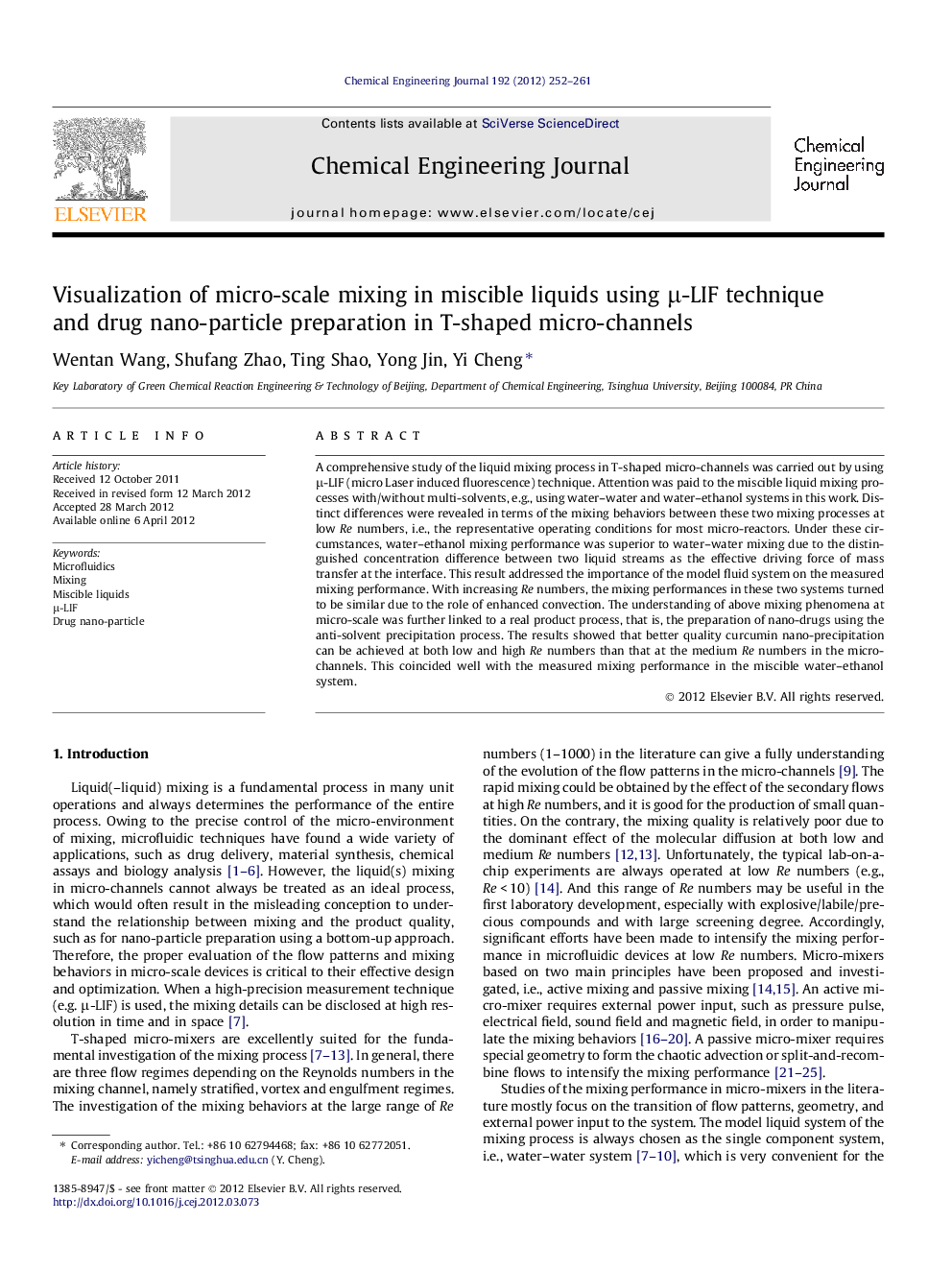| کد مقاله | کد نشریه | سال انتشار | مقاله انگلیسی | نسخه تمام متن |
|---|---|---|---|---|
| 149816 | 456438 | 2012 | 10 صفحه PDF | دانلود رایگان |

A comprehensive study of the liquid mixing process in T-shaped micro-channels was carried out by using μ-LIF (micro Laser induced fluorescence) technique. Attention was paid to the miscible liquid mixing processes with/without multi-solvents, e.g., using water–water and water–ethanol systems in this work. Distinct differences were revealed in terms of the mixing behaviors between these two mixing processes at low Re numbers, i.e., the representative operating conditions for most micro-reactors. Under these circumstances, water–ethanol mixing performance was superior to water–water mixing due to the distinguished concentration difference between two liquid streams as the effective driving force of mass transfer at the interface. This result addressed the importance of the model fluid system on the measured mixing performance. With increasing Re numbers, the mixing performances in these two systems turned to be similar due to the role of enhanced convection. The understanding of above mixing phenomena at micro-scale was further linked to a real product process, that is, the preparation of nano-drugs using the anti-solvent precipitation process. The results showed that better quality curcumin nano-precipitation can be achieved at both low and high Re numbers than that at the medium Re numbers in the micro-channels. This coincided well with the measured mixing performance in the miscible water–ethanol system.
► Visualized the miscible liquid mixing process in micro-channels by μ-LIF technique.
► Revealed distinct differences of the mixing behaviors at low Re numbers.
► Disclosed the considerable mass transfer between the different solvents.
► Prepared the curcumin nano-drugs using the anti-solvent precipitation process.
Journal: Chemical Engineering Journal - Volume 192, 1 June 2012, Pages 252–261